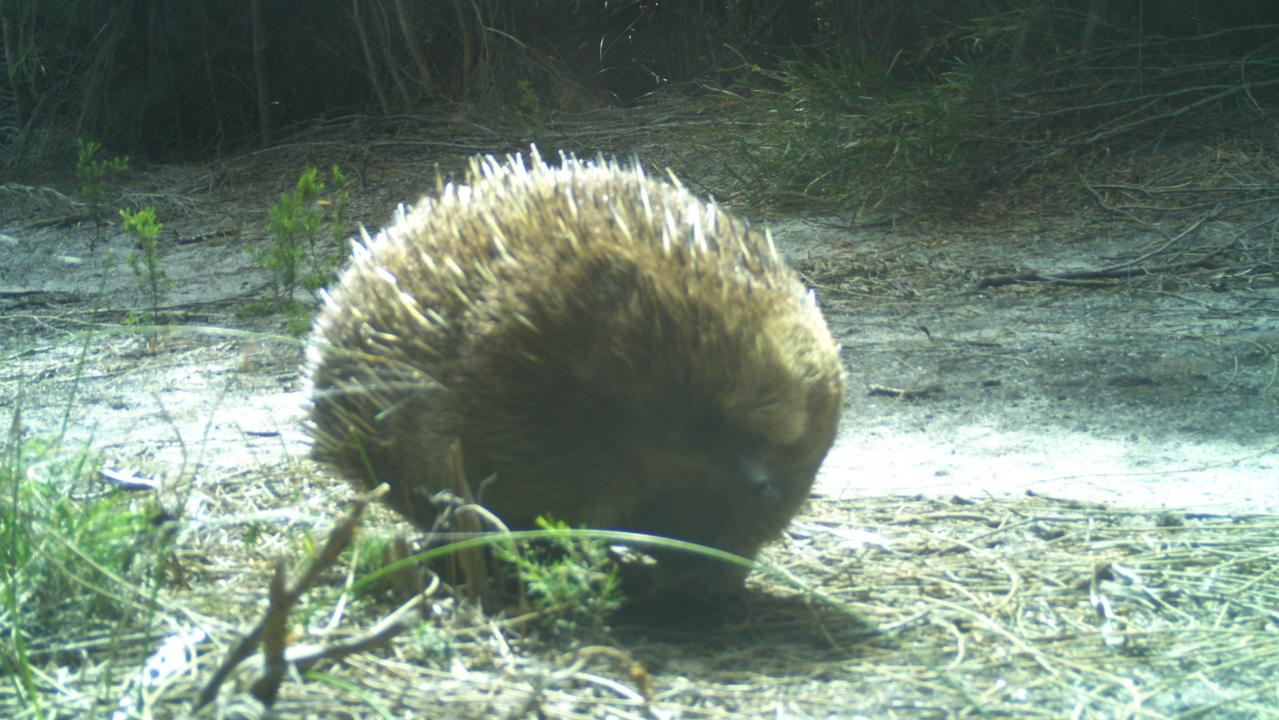TasWeekend: Three Capes Track awesome trek for all ages
COMBINING wonderful walks and stunning scenery by day with comfortable cabins at night, Three Capes Track offers an awesome adventure for all ages.
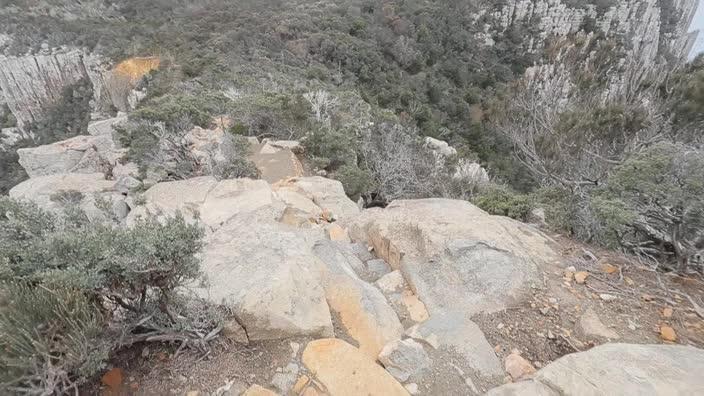
THE weather forecast was troubling for a mother about to take her young into the wild: “Very windy, very high chance of rain, the chance of a thunderstorm … and possible hail in the late afternoon and evening.”
My heart sank as I lay in bed the night before we set out to walk the Three Capes Track on the tempestuous Tasman Peninsula.
Should I have bought those blousy pairs of waterproof pants? At least I’d lashed out on backpack liners – $6 for three crackly garbage bags to keep our sleeping bags and clothes dry in a downpour. But should I have invested in rainproof covers to go over the packs, too?
I don’t know. I don’t want to go anymore. Oh, stop fretting and get to sleep!
My mother, riding her big swayback mare Susie, took me droving when I was eight years old.
It took only about a week to move our cattle from the 800ha property we’d been leasing in north-west NSW to our new farm, but those long, slow days – grazing the Herefords by day and camping with them at night in travelling stock reserves – made a big impression on me. It felt so right to be on the road and away from it all.
I loved moving on to new territory every day, and at a pace that felt completely natural. And I loved the satisfying sense of being in our own world and on a private mission. I quite often ride parts of that trip again in my mind. It will stay with me forever.
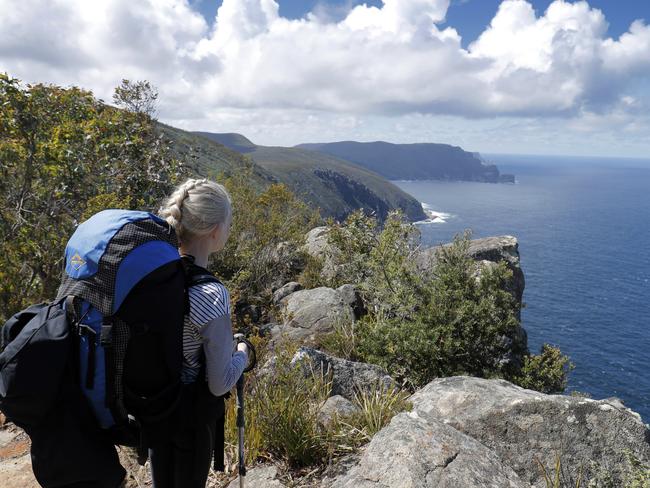
I wanted my nine-year-old daughter and her nearly 11-year-old sister to experience something akin to that sense of elsewhere.
I wanted to break from our everyday lives, change gears, transport them into a different mode. And, as we headed into the final quarter of what’s been a big year for us, with lots of change, the timing felt right.
As the buzz built over the new Three Capes Track, I decided this immersive walking experience – 46km over four days – might be the next best thing to droving and just as empowering.
It’s raining when we set out for the Tasman Peninsula. But by Dunalley, where a chalked roadside message says “life is a marathon, not a sprint”, it is dry.
By the time we reach the Port Arthur Historic Site 90 minutes from Hobart, where the four-day, three-night experience begins with a boat trip, it’s looking likely this more benign weather will hold.
Any vestiges of fretfulness are blown away as our young skipper guns the open boat across the waters of Port Arthur for an hour of sightseeing. The wind whips the children’s hair and delight breaks across the faces of the older men from East Gippsland who are milling at the bow like an order of monks in the long cassock-like red raincoats we’ve all donned for the ride.
Our 21-year-old skipper, Finlay Mooney, of Pennicott Wilderness Journeys, not only makes the boat go fast, he has an abundance of stories to share and the gift of making you believe he’s telling them for the first time.
Raised in a family of local commercial fishermen, he made pocket money right here as a kid by diving for golf balls hit off the seacliff edge of Tasman Golf Course (best day: 87 balls, a joint snorkelling effort with his brother).
In broadbrush strokes and with a keen eye for wildlife, Finn brings the sea and the local lore alive: the short, grim history of shorebased whaling and the boat-building industry it spawned; oceanic cormorant chicks nesting in towering sea cliffs: a white-bellied sea eagle at nest; shy albatross hovering; and a succinct slice of geology as we gaze at the dolerite columns of Cape Raoul.
At Crescent Bay, we stop to watch sand boarders plummeting down the dunes, which reminds Finn of how he and his mates used to flog “for sale” signs from the local real estate agent to ride here as toboggans.
Eventually, he noses the custom-made cat to Denmans Cove, dropping a set of stairs down from the bow for a beach landing. And here the walk begins.
We stop awhile to get our bearings and fiddle with our packs; it’s a good excuse to create a bit of space between us and the other walkers who have already disappeared along a path into the Tasman National Park.
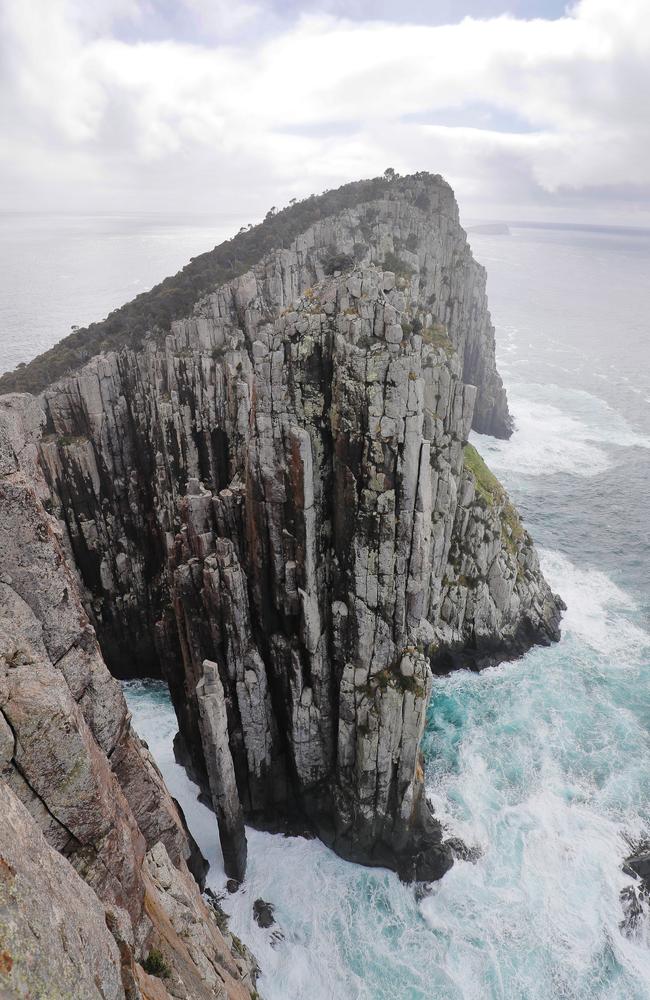
There are 45 walkers today, with bookings capped at 48 daily to give everyone a bunk bed at the three camps along the way. With most of the track a one-way only proposition, with careful timing you can walk much of it without seeing anyone else.
This afternoon’s walk is just an introductory amble.
We stop for chocolate half an hour in, at Surveyors Cove, where the children make cobblestone cairns with Richard Jupe, the Mercury’s chief photographer, who is travelling with us to document the trip.
An hour later, at the edge of a buttongrass plain flanked by eucalypt scrub, we arrive at Surveyors Cabin, which overlooks Cape Raoul.
The camp is welcoming and nicely designed, with simple bunkrooms spaced along an expansive deck, and two communal kitchen and relaxing hubs, which have gas cooking hobs and cooking utensils, stainless-steel benches, rainwater on tap, pellet heaters, a small library and art materials, and USB phone chargers.
The bunkrooms, sleeping four and eight, have very comfortable mattresses but no electric lighting or heating.
The award-winning design, by local architects JAWS, and fit-out responds to market research conducted in 2007 with hikers who had previously walked in the state.
Comfortable accommodation was deemed the biggest drawcard for two reasons: many people did not want to sleep on the ground in a tent after walking all day, nor did they want to carry tents, mattresses and cooking gear if they could avoid it.
Essentially, feedback pointed to the highly successful New Zealand hut model, which has influenced the Three Capes design, with the comfy beds and lighter packs making the walk achievable for many more people.
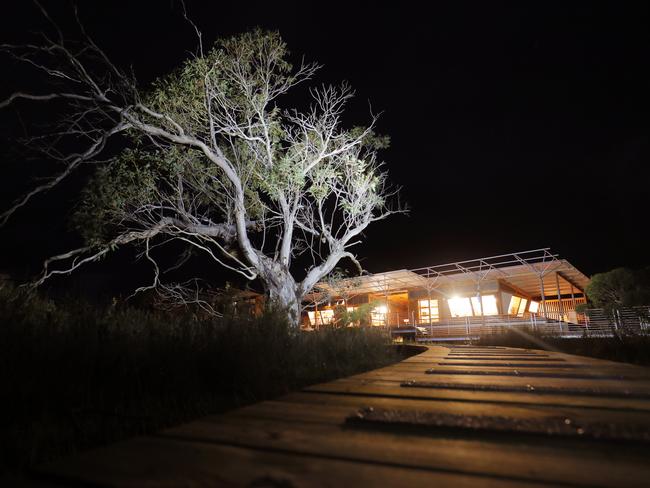
As park ranger Jess puts it in our 6pm briefing: “This is a way of getting people out into national parks without terrifying them.”
The forecast for tomorrow is again dire, but Jess reckons the dramatic landscape we will see needs dramatic weather to go with it.
“Six to 15mm of rain is going to be just perfect,” the brainwashed agent of nature beams. (Could her PhD studies in historical fiction account for her Wuthering Heights leanings, I wonder.)
Day two begins sweetly, with a little Bennetts wallaby by the track.
Again, despite the forecast, the rain holds off. We walk 11km through eucalypt forest and moorland to Arthurs Peak with its views to Cape Raoul, then on through the trees until we come to an elevated coastal heathland dubbed Ellarwey Valley (as in “where the ‘ell are we?”).
Then it’s back into a stringybark forest and on to the Munro camp high above the seacliffs of Munro Bight, with a fabulous deck from which some walkers see whales the following morning.
There are sections of the track that hug the seacliffs, but much of today’s walk is slightly inland and we find ourselves focusing on the little things.
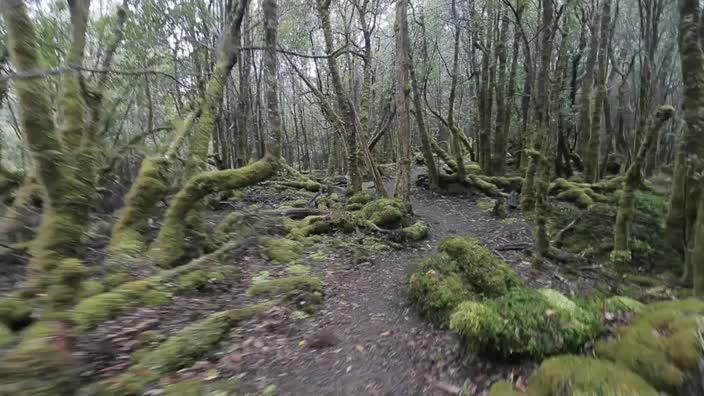
Spring wildflowers are a highlight and we have fun identifying them from the excellent walking handbook.
The girls decide Bushman’s bootlace (Pimelea nivea) would be better-named Bushman’s toenail.
And the recurring Pineapple Candleheath (Richea dracophylla) becomes our unofficial tramping emblem.
Speaking of tramping, the timber boardwalk we’re on is wonderful. Easy underfoot and artfully laid, it is another major drawcard.
It makes this a dry-boot, no-mud walk (which is lucky, because we’re wearing everyday runners). Great care, too, has been taken in building the countless stone steps along the way.
About 200 workers were involved in crafting and upgrading the track over several years before its December opening, with crews camping alongside worksites.
Staff and materials were carried in and out by chopper. All the bench seating was made by UTAS design students.
And it’s not over yet: the plan is to extend the track, with work on a new Cape Raoul section due to begin early next year.
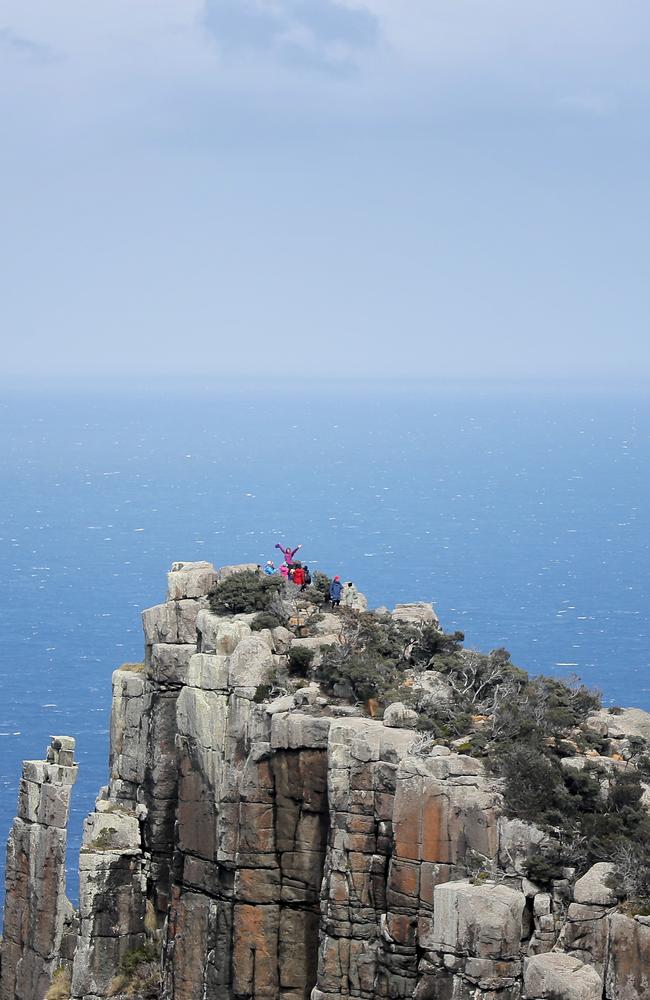
Good riddance! We’re able to ditch our packs, which are making enemies with our collarbones and my neck, for most of day three, leaving them at Munro Cabin while we walk out to The Blade, near Cape Pillar. Wildly dramatic with miles of seacliff and crashing waves, this is where the walk really comes into its own.
It’s a spectacularly powerful landscape. The children are suitably awestruck and for Richard it’s a photographic dream.
It’s a heady feeling to perch way out on The Blade and dare to look down, down, down.
Too soon, a sheet of rain drives us back and we return to Munro to collect our packs and walk on to Retakunna Cabin for our last night.
All up, we walk 17km today, a long way for the kids, but they are holding up well. And they still have chocolate from the Royal Hobart Show stashed in their puffer-jacket pockets to call on.
Otherwise, though, our supplies are looking slim. We’re OK for dinner – after Rich’s gourmet prosciutto-wrapped chicken on night one, we’re reduced to dehydrated vegetables and soy mince tonight.
It’s tomorrow I’m a bit concerned about: we have just four Vitaweet biscuits, half a stick of salami, about 300g of muesli and some milk powder left. But later, as I sip Galliano from a plastic salmon mousse container and chat and laugh with fellow walkers while the children paint and draw by the fire, I’m quite unrattled by the rations situation.
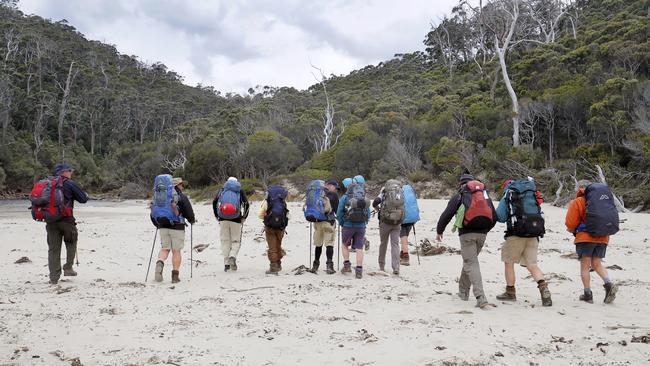
We’re on the track by 7am. It’s our last day and we need to be at Fortescue Bay to catch the shuttle bus at an appointed time, so the pressure is on. It is a shame, because it would have been lovely to linger on Mt Fortescue, if only to rest.
Described by the Retakunna ranger as a “meandering” climb, the ascent is actually pretty tiring – and, though the forecast has improved, it is raining. And my hips are aching.
It is rapturously beautiful, though – with such everchanging vegetation it feels as if we’re in some sort of virtual-reality film tunnel. We especially love the dark, moss-tinged rainforest and giant tree-fern sequences.
We emerge from the mountain onto an easy-walking cliff edge trail that leads us to the junction of Cape Hauy. The rain has stopped and there’s time to walk out to the cape tip, so we stash our packs in the bush and head steeply down before climbing up to the lookout for yet another breathtaking view of the Tasman Sea.
The children start to flag a little as we climb back up to the junction.
The elder rolls her ankle and scrapes her knee, the younger discovers a lot of blood soaking into her white sock from a leech and soon afterwards she trips over, too. Their little faces look tired, but walking on is second nature to them now, and they barely grumble, just keep moving.
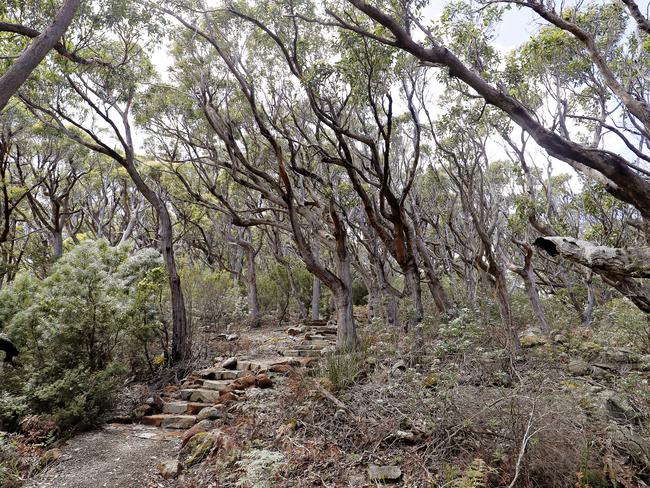
Retrieving our packs, we find a bandaid for the leech bite and eat our paltry lunch.
Richard shares his remaining stash of muesli bars and chocolate bars then darts ahead, in that lightning way of photographers, to get his final shots and a chilly, celebratory swim in at Fortescue Bay.
I take it slowly with the girls, savouring the last couple of hours, resting them up at bench seats and somehow losing track of the time.
When we walk hand-in-hand into Fortescue Bay minutes before the shuttle bus is due to leave, cheers break out among the group and the children are heartily congratulated by all.
“You made it!”
Walking to school in Hobart the next morning, my youngest daughter says her school bag feels as light as eight feathers. “And I feel as if I could do anything that involves walking,” she adds.
In coming days, as our soreness eases along with the memory of how laborious parts of the walk felt at times, something more powerful lodges within us and, in my mind at least, the landscapes take on a mythical quality. I’m not going to give it a name, but I know this: mission accomplished.
â— Tasmania Parks and Wildlife Service and TasWeekend are offering one lucky reader a double pass for the Three Capes Track, valued at up to $990. For your chance to win, find all the details in next weekend’s TasWeekend magazine.
Amanda Ducker and Richard Jupe were hosted by the Tasmania Parks and Wildlife Service. The children walked as paying guests.
Adult tickets for the four-day experience are $495, with child and concession tickets $396. Bookings at threecapestrack.com.au The Three Capes Track claimed the Gustav Award for New Tourism Business at last night’s state tourism industry awards in Hobart.
For more great lifestyle reads, pick up a copy of TasWeekend magazine in your Saturday Mercury.
Originally published as TasWeekend: Three Capes Track awesome trek for all ages



